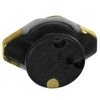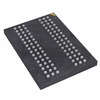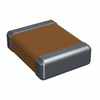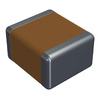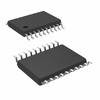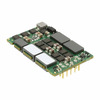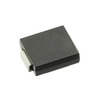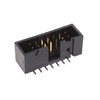LM324 vs LM358: Which Operational Amplifier is Best for Your Projects
The main function of the operational amplifier is to amplify the amplitude of the input signal so that the weak signal can be amplified to an amplitude range suitable for subsequent circuit processing. Today, we will learn about the differences between the two operational amplifiers LM324 and LM358.
Catalog

What is an Operational Amplifier?
An operational amplifier is a circuit unit with a very high amplification factor. The popularity of operational amplifiers in analog circuits is due to their versatility. By using negative feedback, the characteristics of the op amp circuit, including gain, input and output impedance, bandwidth, etc., are determined by external components and have little dependence on the temperature coefficient or engineering tolerances of the op amp itself.
Because operational amplifiers were used in early analog computers to implement mathematical operations, they were named "operational amplifiers". From a functional perspective, an op amp is a circuit unit that can be implemented either as a discrete device or in a semiconductor chip. With the development of semiconductor technology, most operational amplifiers exist in the form of single chips. Op amps are widely used in a wide variety of applications in the electronics industry.
Overview of LM324

The LM324 is a low-cost quad operational amplifier with true differential inputs. It is stable over the temperature range of 0°C to 70°C, while its junction temperature can be as high as 150°C. This quad amplifier operates from supply voltages as low as 3.0 V and as high as 32 V, with approximately one-fifth the quiescent current of the MC1741 (per amplifier). It is worth noting that the common-mode input range includes the negative supply, which means that in many applications it eliminates the need for external biasing components.
Replacements and Equivalents
• LT1014
• LM124
• LM201
• LM248
• LM709
Overview of LM358
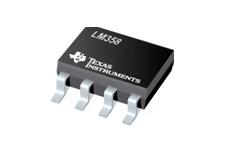
The LM358 is a dual operational amplifier that contains two independent operational amplifiers with high gain and internal frequency compensation. It is suitable not only for single-supply applications over a wide supply voltage range but also for dual-supply operation. Under recommended operating conditions, its supply current is independent of the supply voltage. The LM358 is suitable for sense amplifiers, DC gain blocks, and all other operational amplifier applications that only use a single power supply.
Replacements and Equivalents
• LM258
• LM2904
• LM324
LM324 vs LM358: Features
Features of LM324
• Single power supply (3.0 V ~ 32 V)
• Common mode range extended to negative supply
• Low input bias current: 100 nA maximum (LM324A)
• Short circuit protected output
Features of LM358
• Dual power supply (±1.5 ~ ±15V)
• Low input offset voltage and offset current
• High DC voltage gain (about 100dB)
• Unity gain bandwidth (approximately 1MHz)
LM324 vs LM358: Technical Parameters
Bandwidth
The bandwidth of LM358 is 1.1MHz, and the bandwidth of LM324 is as high as 1.3MHz. In situations where high-frequency amplification is required, such as audio amplification, high-speed amplification, etc., the performance of LM324 will be more advantageous.
Output Current
The output current of LM358 is 20mA, while the output current of LM324 is 40mA. In some circuits with large load applications, such as motor drives, inverters, etc., where high output current is required, LM324 has a larger output current and is therefore more suitable for these applications.
Slew Rate
Slew rate refers to the time required for the output of the op amp chip to reach its maximum amplitude. The slew rate of LM358 is 0.5V/μs, while the slew rate of LM324 is 0.7V/μs. The slew rate of LM324 is slightly higher, so it is more favorable in frequency response.
Working Voltage Range
The operating voltage range of LM324 is 3V to 32V, while the operating voltage range of LM358 is 3V to 36V. Although there are only minor differences between the two, during the circuit design process, we need to choose a suitable operating voltage range based on actual application requirements.
Noise Voltage
The LM358 has a relatively low noise voltage of 0.4mV, while the LM324 has a noise voltage of 2mV. In some low-noise applications, the advantages of LM358 are obvious.
Bias Current
The LM324 has a bias current of 20nA. In comparison, the LM358 has a bias current of 100nA, five times that of the LM324. When dealing with tiny voltage signals, amplifiers may convert these signals into current signals for amplification. If the amplifier's bias current is too large, it may cause interference to the signal, causing the circuit's accuracy to decrease.
LM324 vs LM358: Pin Configuration
The following figures show the pinout of LM324 and LM358 respectively.

Pin Configuration of LM324
LM324 has a total of 14 pins, each with a different function. Its pin names and descriptions are as follows.
Pin 1 (Out 1-Output 1): This pin is for obtaining output of 1st OP-AMP.
Pin 2 (Input 1-inverting Input): This pin is for applying inverting input voltage to 1st OP-AMP.
Pin 3 (Input 1- non-Inverting Input): This pin is for applying non-inverting input voltage to 1st OP-AMP.
Pin 4 (Vcc): This pin is for connecting supply voltage.
Pin 5 (Input 2- non-Inverting Input): This pin is for applying non-inverting input voltage to 2nd OP-AMP.
Pin 6 (Input 2-inverting Input): This pin is for applying inverting input voltage to 2nd OP-AMP.
Pin 7 (Out 2- Output 2): This pin is for obtaining output of 2nd OP-AMP.
Pin 8 (Out 3- Output 3): This pin is for obtaining output of 3rd OP-AMP.
Pin 9 (Input 3-inverting Input): This pin is for applying inverting input voltage to 3rd OP-AMP.
Pin 10 (Input 3- non-Inverting Input): This pin is for applying non-inverting input voltage to 3rd OP-AMP.
Pin 11 (Vee, GND): This pin is for connecting ground for single voltage operation or the second as Vee for dual power supply operation.
Pin 12 (Input 4- non-Inverting Input): This pin is for applying non-inverting input voltage to 4th OP-AMP.
Pin 13 (Input 4-inverting Input): This pin is for applying inverting input voltage to 4th OP-AMP.
Pin 14 (Out 4- Output 4): This pin is for obtaining an output of 4th OP-AMP.
Pin Configuration of LM358
The LM358 has a total of 8 pins, each with a different function. Its pin names and descriptions are as follows.
Pin 1 (OUTPUT1): Output of op-amp 1
Pin 2 (INPUT1-): Inverting input of op-amp 1
Pin 3 (INPUT1+): Non-inverting input of op-amp 1
Pin 4 (GND): Ground or negative supply voltage
Pin 5 (INPUT2+): Non-inverting input of op-amp 2
Pin 6 (INPUT2-): Inverting input of op-amp 2
Pin 7 (OUTPUT2): Output of op-amp 2
Pin 8 (VCC): Positive supply voltage
LM324 vs LM358: Applications
Application of LM324
• Current source: It can be configured as a current source and is typically used to drive other circuit components.
• Reference voltage source: LM324 can be used as a stable reference voltage source for the reference voltage of other circuits.
• Signal conditioning: It is used in signal conditioning circuits such as filtering, amplification, inverting and non-inverting amplifiers etc.
• Oscillator: It can be used to build simple oscillator circuits such as sine wave, square wave or triangle wave oscillator.
• Voltage follower: It can also be used as a voltage follower to copy changes in the input signal to the output signal, often used for signal buffering or cascade amplification.
• Comparator: LM324 is often used as a comparator, which can compare the magnitude of two input signals and output a high or low level to indicate which signal is larger.
Application Fields of LM358
• Medical equipment: LM358 can be used for signal amplification and processing of various sensors, as well as control and monitoring of medical equipment.
• Low-power comparators: The LM358 is often used in low-power comparator applications, such as battery-powered electronic devices, to monitor input signals and trigger appropriate actions.
• Amplifier: It can be used as a non-inverting or inverting amplifier for signal amplification or filtering applications.
In addition to this, the LM358 can also be used for signal conditioning or as a voltage follower.
Frequently Asked Questions [FAQ]
1. What is LM358 used for?
LM358 can be used as transducer amplifier, DC gain block etc. It has large dc voltage gain of 100dB. This IC can be operated on wide range of power supply from 3V to 32V for single power supply or from ±1.5V to ±16V for dual power supply and it also support large output voltage swing.
2. Is LM358 good for audio?
There are much better opamps available for sensible prices, and for the most part there's no good reason to use an LM358 in any audio circuit. However, this opamp has some useful characteristics, and it's very low power, which may well be just what you need.
3. What does a LM324N do?
Conventional operational amplifier applications can be easily implemented with the LM324N. It has four independent op-amps compensated in a single 14-pin DIP package that can be used as amplifiers, comparators, oscillators, rectifiers, etc.
4. What type of amplifier is LM324?
The LM324 series are low−cost, quad operational amplifiers with true differential inputs. They have several distinct advantages over standard operational amplifier types in single supply applications.
About us
ALLELCO LIMITED
Read more
Quick inquiry
Please send an inquiry, we will respond immediately.
→ Previous

Single chip microcomputer is not just a chip with a specific logic function, but a computer system integrated into a chip. This article will introduce the characteristics, development, main components, advantages and disadvantages, applications and differences between MSP430 and 89C51 to help you be...

Transistors play an important role in electronic devices, and they are widely used in the design of analog and digital circuits. At present, bipolar transistors and junction field-effect transistors have been widely used, but the most widely used one is the metal oxide semiconductor field-effect tra...
→ Next

Comparative Analysis of MSP430 and 89C51 Microcontrollers: Features and Applications
on April 29th

2N7000 vs BS170: Comparing Two Popular N-Channel MOSFETs
on April 29th
Popular Posts
-

What is GND in the circuit?
on January 1th 3272
-

RJ-45 Connector Guide: RJ-45 Connector Color Codes, Wiring Schemes, R-J45 Applications, RJ-45 Datasheets
on January 1th 2815
-

Understanding Power Supply Voltages in Electronics VCC, VDD, VEE, VSS, and GND
on November 20th 2640
-

Fiber Connector Types: SC Vs LC And LC Vs MTP
on January 1th 2265
-

Comparison Between DB9 and RS232
on January 1th 1882
-

What Is An LR44 Battery?
Electricity, that ubiquitous force, quietly permeates every aspect of our daily lives, from trivial gadgets to life-threatening medical equipment, it plays a silent role. However, truly grasping this energy, especially how to store and efficiently output it, is no easy task. It is against this background that this article will focus on a type of coin cell battery that may seem insignificant on the...on January 1th 1846
-

Understanding the Fundamentals:Inductance Resistance, andCapacitance
In the intricate dance of electrical engineering, a trio of fundamental elements takes center stage: inductance, resistance, and capacitance. Each bears unique traits that dictate the dynamic rhythms of electronic circuits. Here, we embark on a journey to decipher the complexities of these components, to uncover their distinct roles and practical uses within the vast electrical orchestra. Inductan...on January 1th 1807
-

What Is RF and Why Do We Use It?
Radio Frequency (RF) technology is a key part of modern wireless communication, enabling data transmission over long distances without physical connections. This article delves into the basics of RF, explaining how electromagnetic radiation (EMR) makes RF communication possible. We will explore the principles of EMR, the creation and control of RF signals, and their wide-ranging uses. The article ...on January 1th 1801
-

CR2430 Battery Comprehensive Guide: Specifications, Applications and Comparison to CR2032 Batteries
What is CR2430 battery ?Benefits of CR2430 BatteriesNormCR2430 Battery ApplicationsCR2430 EquivalentCR2430 VS CR2032Battery CR2430 SizeWhat to look for when buying the CR2430 and equivalentsData Sheet PDFFrequently Asked Questions Batteries are the heart of small electronic devices. Among the many types available, coin cells play a crucial role, commonly found in calculators, remote controls, and ...on January 1th 1799
-

Comprehensive guide to hFE in transistors
Transistors are crucial components in modern electronic devices, enabling signal amplification and control. This article delves into the knowledge surrounding hFE, including how to select a transistor's hFE value, how to find hFE, and the gain of different types of transistors. Through our exploration of hFE, we gain a deeper understanding of how transistors work and their role in electronic circu...on November 20th 1782







